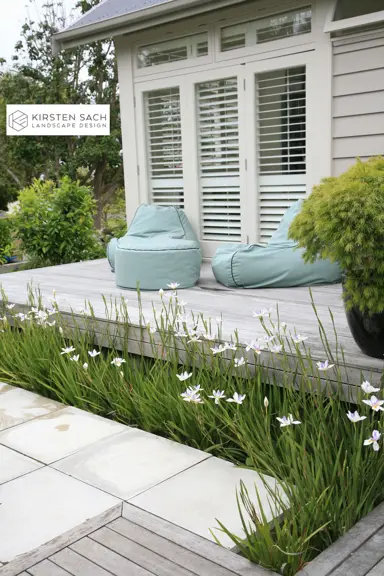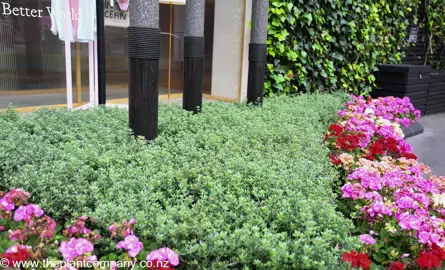
The Plant Company grows and sells thousands of Colocasia plants throughout NZ. We pride ourselves on producing high quality plants and seeing the joy from our customers when they receive them. We do hope you enjoy them and support this NZ business that is passionate about plants.
Why? Our plants are in high demand due to our reputation for delivering high quality products at competitive prices. We may have these in production or be able to source these for you, so please feel free to contact us and our fantastic team will respond to your enquiry. Alternatively, we have a world class plant finder tool that you can use to help find alternative options.
Colocasia elata Black Magic displays bold, black foliage on matching stems. Reaching 80 cm tall and wide, it thrives in tropical settings or as a...
Commonly known as Taro, this is a herbaceous perennial grown for its roots and lush foliage. It features large and showy, green leaves held off...
Colocasia esculenta Black Coral features glossy, jet black leaves that bring bold contrast to any garden. It grows to 1.2 m tall and 90 cm wide and...
Colocasia esculenta Maui Gold displays glossy, green-yellow leaves held on ivory-coloured stems. It grows to 1.2 m tall and 90 cm wide and excels in...
This variety of Colocasia is an herbaceous perennial renowned for its large and lush foliage. It features very large and glossy, dark green leaves...
Colocasia White Lava is a tropical perennial with large green leaves streaked with cream-yellow, held on black stems. It grows to 1 m tall and 90 cm...
Growing perennial plants such as Colocasia (Elephant Ear Plant) delivers a vast range of benefits:
We’ll help you find the right Colocasia or Black Taro for your space. Choose from a wide variety of locally grown plants that have been propagated and bred to thrive in NZ’s climate. We stock only the highest quality plants, sourcing them from NZ’s leading nurseries. Each plant is packed and transported with extreme care, ensuring it arrives to you in the same condition it was in when it left the nursery. If you are wanting to buy Colocasia plants, shop with confidence from the best in the industry.
The terms "taro" and "Colocasia" are often used interchangeably, but there is a subtle distinction between the two. "Taro" is the common name for a specific species within the genus Colocasia, namely Colocasia esculenta. This species is the most widely cultivated and consumed taro variety, known for its starchy corms that are used in various cuisines around the world.
On the other hand, "Colocasia" refers to the entire genus, encompassing over 60 species of flowering plants. The genus is characterized by its large, heart-shaped or arrowhead-shaped leaves and its edible corms. While Colocasia esculenta is the most common taro species, other species within the genus are also cultivated for their edible corms, such as Colocasia gigantea and Colocasia samoensis.
Here's a summary of the key differences between taro and Colocasia:
Taro
Colocasia
Determining whether Alocasia or Colocasia is "better" depends on your individual preferences and intended use. Both genera offer unique characteristics and benefits, making them suitable for different purposes.
Alocasia
Colocasia
Considerations for Choosing:
Ultimately, the choice between Alocasia and Colocasia depends on your personal preferences, available space, and ability to provide proper care. Both genera offer unique beauty and can enhance your indoor or outdoor spaces.
Yes, the common name "elephant ear" is often used to refer to Colocasia plants. The term "elephant ear" is derived from the large, heart-shaped leaves of Colocasia plants, which resemble the ears of an elephant. The name is used interchangeably with "Colocasia" to refer to these plants, particularly in horticultural and landscaping contexts. While other plants, such as Xanthosoma and Alocasia, also have large, heart-shaped leaves, Colocasia plants are the most commonly associated with the "elephant ear" moniker. Their distinctive foliage and diverse species have made them popular choices for both indoor and outdoor gardens.
Yes, taro grows in New Zealand. It was introduced to New Zealand by Polynesian settlers around 1200 AD. Taro is a tropical plant, but it has been successfully grown in New Zealand's warmer regions, such as Northland and the Bay of Plenty.
Taro is an important food crop for Pacific Islanders and Maori people in New Zealand. The corms, or roots, of the taro plant are eaten cooked. The plant is also a valuable source of starch and fiber. Taro is a relatively low-maintenance crop and can be grown in a variety of soil types, including clay soils. However, it does require warm temperatures and well-drained soil to thrive.
In New Zealand, taro is typically grown in small-scale gardens for home consumption. However, there are also a few commercial taro growers in the country. Taro is sold in both fresh and frozen forms in New Zealand supermarkets.
Here are some of the benefits of growing taro in New Zealand:
If you are interested in growing taro in New Zealand, there are a few resources available to help you get started. The Ministry for Primary Industries has a website with information on growing taro, and there are also a number of community gardens and organizations that offer support and advice to growers.
Taro has been an integral part of the Māori diet for centuries. It was brought to New Zealand by Polynesian settlers around 1200 AD and quickly became a staple food source. Taro is considered a kai rangatira, or food for chiefs, due to its nutritional value and cultural significance.
New Zealand taro is edible. Taro, also known as Colocasia esculenta, is a starchy root crop that is a staple food source in many Pacific Islander and Polynesian cultures. It was introduced to New Zealand by Polynesian settlers around 1200 AD and has since become an important part of the Māori diet.
Taro is a versatile ingredient that can be cooked in a variety of ways, including steaming, boiling, baking, and frying. It has a starchy, slightly sweet flavor and is often used in soups, stews, and porridges. Taro can also be made into flour, which can be used to make bread, pancakes, and other baked goods.
While all varieties of taro are edible, some varieties are better suited for cooking than others. New Zealand taro is typically a good eating taro, with a starchy texture and a slightly sweet flavor. However, it is important to cook taro thoroughly before eating, as it can contain oxalates that can cause irritation if consumed raw.
Here are some tips for cooking New Zealand taro:
If you are interested in trying New Zealand taro, you can find it at some specialty food stores or online. You can also grow your own taro if you live in a warm climate with well-drained soil.
There are two main contenders for the title of "black elephant ear plant" in New Zealand:
1. Colocasia Black Magic: This popular cultivar of the taro plant (Colocasia esculenta) features stunningly deep purple leaves and stems that appear almost black, especially in shaded areas. It can grow up to 1 m tall and wide, making it a bold and dramatic addition to the garden.
2. Alocasia Black Coral: This stunning alocasia is known for its glossy, almost iridescent black leaves that emerge with a striking bronze sheen. It's a smaller plant than Colocasia Black Magic, typically reaching around 30-60 cm tall and wide, and thrives as a houseplant or in sheltered outdoor locations.
While elephant ear plants offer striking foliage and tropical vibes, they come with their own set of challenges. Here are some potential cons to consider before incorporating them into your garden:
Size and Spread:
Toxicity:
Maintenance:
Additional Considerations:
The toxicity of elephant ear plants (Colocasia esculenta and related species) varies based on the plant part and amount consumed:
Plant part:
Amount ingested:
Whether you need assistance finding the plant you’re looking for or you simply want to know more about who we are and what we do, we invite you to get in touch with us today. A member of The Plant Company team will get back in touch as soon as possible.


